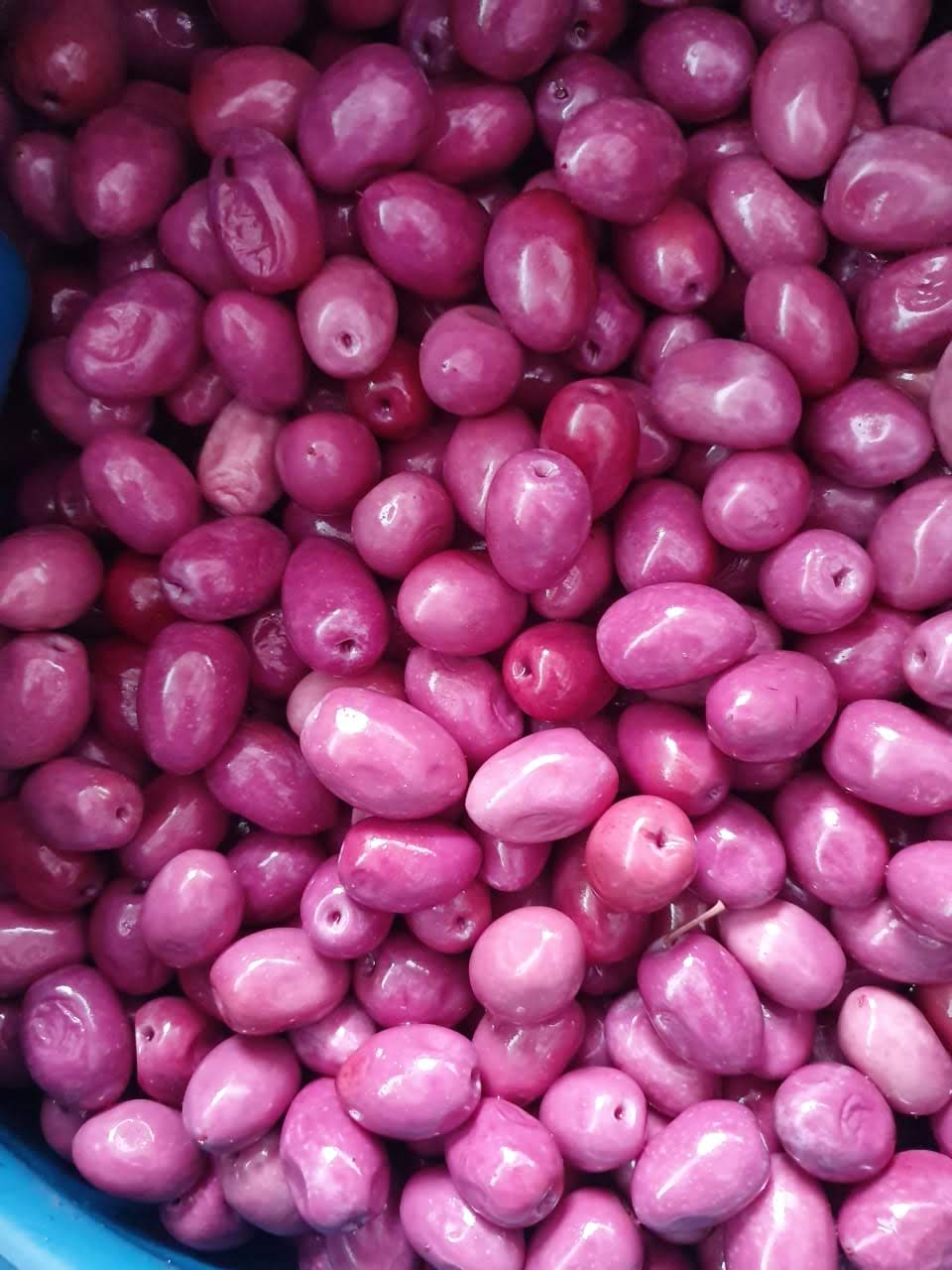Black Olives
Traditionally called "black" or "botija" olives, they are not black but rather a cherry-colored olive. When exposed to air, they can turn slightly darker, although it is recommended that they always be covered in brine. This olive is obtained from the ripe fruit of the olive tree, which undergoes a 45-day lactic fermentation process and is ready for consumption, although with longer storage, the flavor can improve substantially. The olive ripens on the tree between July and August, and after its fermentation period, it is ready to be sold in October and November.
Characteristics of Black Olives
Black olives can be recognized by the following characteristics:
Large size: Generally, black olives are sold in the market in sizes of 90/110 units per kilo as "extra" and 110/130 units per kilo as "premium." Smaller sizes are intended for culinary purposes. Fleshyness: Refers to the consistency of the flesh. The olive should not be soft but rather firm.
Flavor: Bitter and salty at the same time. The flavor is quite intense and permeates the entire mouth.
Culinary Uses
Black olives are present in various Peruvian dishes, from stews to cold dishes, as an ingredient or side dish. These are some dishes that include black olives:
Octopus in olive sauce
Causa
Ají de Gallina
Juane
Tamale
They can also be used to make tapenades, black olive sauce, black olive mayonnaise, among other preparations.
Current Production
For the olive to reach ripeness on the tree, it must be free of pits and molasses, and the stem must not have fallen off. Of the total number of green olives, it is estimated that only 30% are harvested as black olives.
This olive is not well known in the global market and is produced in small quantities, while most olives are processed when they are green.
